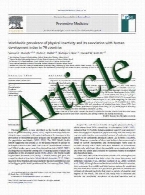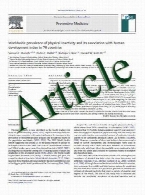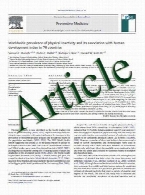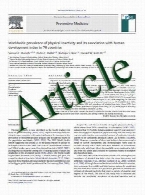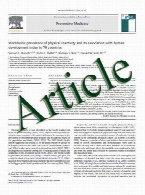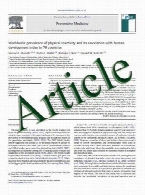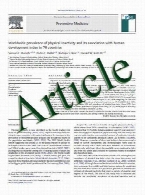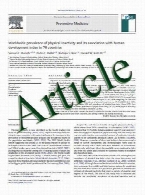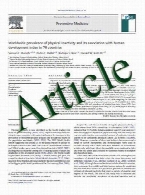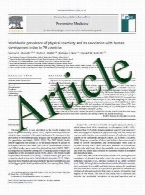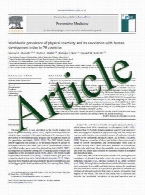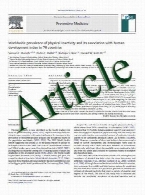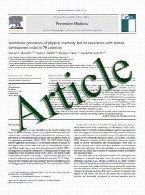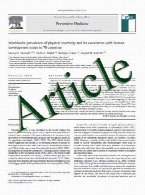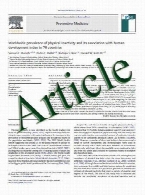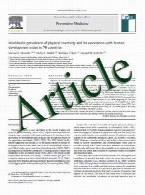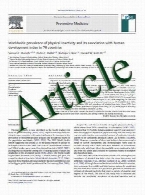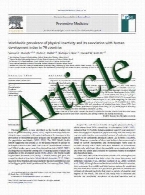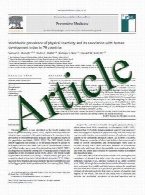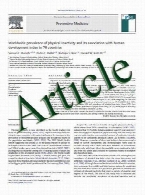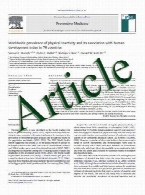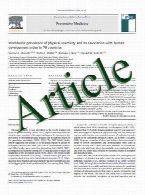

A signature of immune function ...
The clinical significance of tumor-infiltrating immune cells has been reported in a variety of human carcinomas including breast cancer. However, mo ...
LDH-A silencing suppresses brea ...
LDH-A, as the critical enzyme accounting for the transformation from pyruvate into lactate, has been demonstrated to be highly expressed in various ...
The effect of mTOR inhibition a ...
mTOR inhibitor rapamycin and its analogs are lipophilic, demonstrate blood–brain barrier penetration, and have shown promising antitumor effects in ...
SWOG S0215: a phase II study of ...
SWOG trial S0102 showed significant activity of the combination of docetaxel and vinorelbine in HER2- negative metastatic breast cancer (MBC). For H ...
Influence of stromal–epithelial ...
Stromal cell-secreted chemokines including CCL2 have been implicated in the primary tumor microenvironment, as mediators of tumor cell migration, pr ...
Alpha- and beta-adrenergic rece ...
Breast cancer mortality is frequently associated with metastatic disease. Metastasis models have shown adrenoceptor (AR) stimulation induces cell mi ...
Gene expression profiling of lu ...
The luminalBsubtype represents a group of high proliferating estrogen receptor positive breast cancers which are associated with a poor prognosis. G ...
Reducing vasomotor symptoms wit ...
To evaluate true acupuncture to control acupuncture (CTRL) (non-insertive stimulation at non-acupuncture points) in breast cancer patients treated w ...
Divergent effects of insulin-li ...
The insulin-like growth factor type 1 receptor (IGF1R) is involved in progression of breast cancer and resistance to systemic treatment. Targeting I ...
Prediction of BRCA2-association ...
Germline mutations in BRCA1/2 increase the lifetime risk for breast and ovarian cancer dramatically. Identification of such mutations is important f ...
A phase II neoadjuvant trial of ...
Endocrine therapy in patients with breast cancer can be limited by the problem of resistance. Preclinical studies suggest that complete blockade of ...
Identification of a new complex ...
In this study, we present a novel complex rearrangement in the BRCA1 gene. The genomic rearrangement was identified using one of the two commerciall ...
Insulin-like growth factor-1 re ...
Insulin-like growth factor-1 receptor (IGF1R) plays a key role in the initiation and progression of breast cancer. However, its prognostic relevance ...
Comparative gene expression ana ...
Functional development of the mammary gland is an important physiological process. Several studies have used gene expression profiling of mammary gl ...
HER2 discordance between primar ...
The proto-oncogene, HER2, has prognostic and predictive relevance in invasive breast cancer (IBC). HER2 testing of primary IBC guides treatment sele ...
Prognosis of metachronous contr ...
Studies comparing the prognosis after contralateral breast cancer (CBC) with that after unilateral breast cancer (UBC) shows conflicting results. We ...
A retrospective study of breast ...
Immunohistochemical markers are often used to classify breast cancer into subtypes that are biologically distinct and behave differently. The aim of ...
RAD50 and NBS1 are not likely t ...
Deleterious mutations in several genes that are involved in repair of damage to DNA have been associated with an increased risk of breast cancer. Re ...
Long-term course of pain in bre ...
After successful treatment of early breast cancer, many women still report pain symptoms, and attribute them to the previous illness or its treatmen ...
Single nucleotide polymorphisms ...
The 20q13 region is frequently amplified/overexpressed in breast tumours. However, the nature of this amplification/overexpression is unknown. Here, ...
Association between the p53 pol ...
p53 is a tumor suppressor gene and plays an important role in the etiology of breast cancer. However, studies on the association between p53 polymor ...
Detection of isolated ipsilater ...
Imaging diagnostic methods except for mammograms are not recommended for follow-up of postoperative breast cancer patients in order to detect small ...
Two new CHEK2 germ-line variant ...
CHEK2 gene mutations occur in a subset of patients with familial breast cancer, acting as moderate/low penetrance cancer susceptibility alleles. Alt ...
Prevalence of BRCA1/2 mutations ...
In order to adequately evaluate the clinical relevance of genetic testing in sporadic breast and ovarian cancer patients, we offered comprehensive B ...
Genetic variants of 6q25 and br ...
A recent genome-wide association study identified a novel single nucleotide polymorphism (SNP), rs2046210, in the 6q25 region as a breast cancer sus ...

